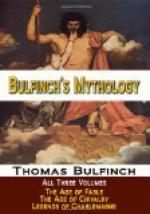FREEMEN, VILLAINS, SERFS, AND CLERKS
The other classes of which society was composed were, first, freemen, owners of small portions of land independent, though they sometimes voluntarily became the vassals of their more opulent neighbors, whose power was necessary for their protection. The other two classes, which were much the most numerous, were either serfs or villains, both of which were slaves.
The serfs were in the lowest state of slavery. All the fruits of their labor belonged to the master whose land they tilled, and by whom they were fed and clothed.
The VILLIANS were less degraded. Their situation seems to have resembled that of the Russian peasants at this day. Like the serfs, they were attached to the soil, and were transferred with it by purchase; but they paid only a fixed rent to the landlord, and had a right to dispose of any surplus that might arise from their industry.
The term “clerk” was of very extensive import. It comprehended, originally, such persons only as belonged to the clergy, or clerical order, among whom, however, might be found a multitude of married persons, artisans or others. But in process of time a much wider rule was established; every one that could read being accounted a clerk or clericus, and allowed the “benefit of clergy,” that is, exemption from capital and some other forms of punishment, in case of crime.
TOURNAMENTS
The splendid pageant of a tournament between knights, its gaudy accessories and trappings, and its chivalrous regulations, originated in France. Tournaments were repeatedly condemned by the Church, probably on account of the quarrels they led to, and the often fatal results. The “joust,” or “just,” was different from the tournament. In these, knights fought with their lances, and their object was to unhorse their antagonists; while the tournaments were intended for a display of skill and address in evolutions, and with various weapons, and greater courtesy was observed in the regulations. By these it was forbidden to wound the horse, or to use the point of the sword, or to strike a knight after he had raised his vizor, or unlaced his helmet. The ladies encouraged their knights in these exercises; they bestowed prizes, and the conqueror’s feats were the theme of romance and song. The stands overlooking the




